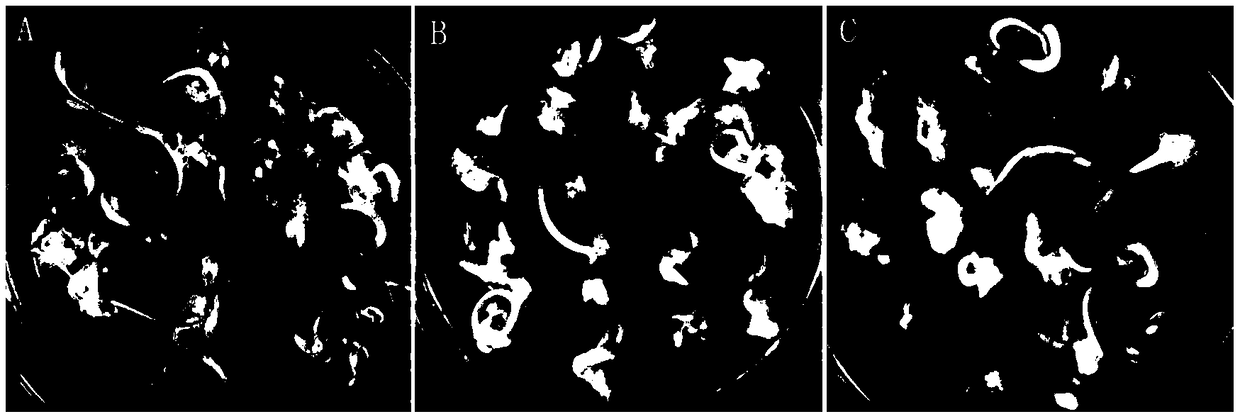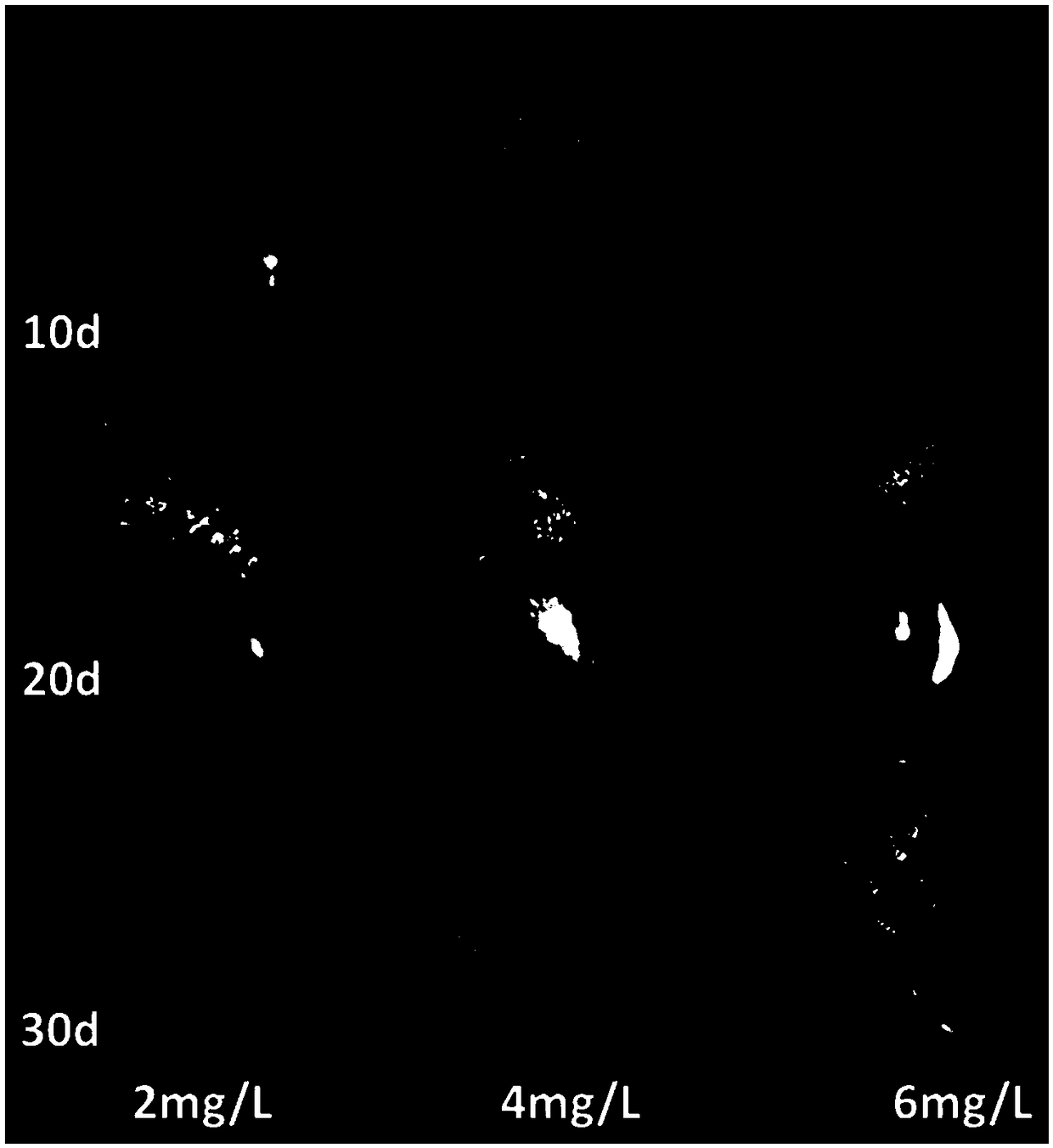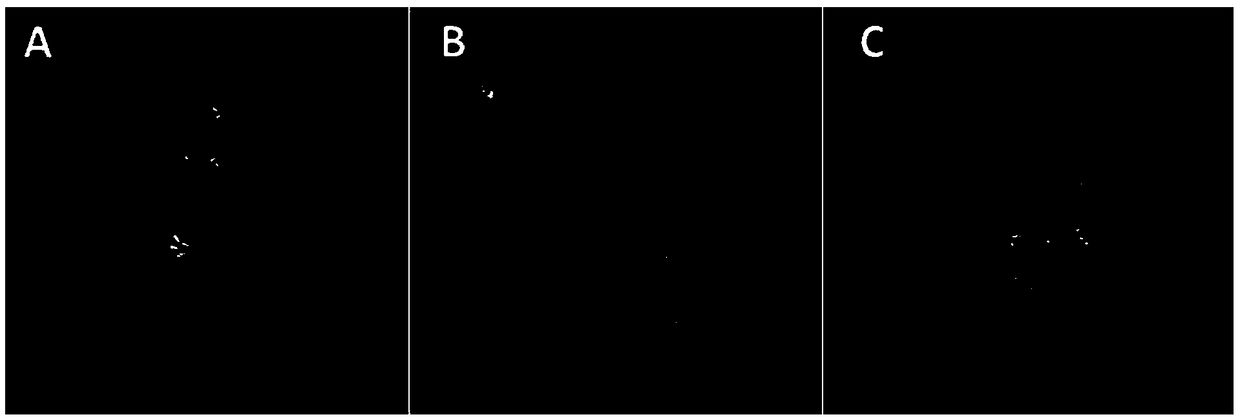Young embryo transformation method of corn selfing line SL1303
An inbred line and corn technology, applied in the field of crop genetics and breeding, can solve problems such as imperfect transformation conditions
- Summary
- Abstract
- Description
- Claims
- Application Information
AI Technical Summary
Problems solved by technology
Method used
Image
Examples
Embodiment 1
[0045] Embodiment 1: experimental material
[0046] 1 plant material
[0047] The young embryos harvested in the same year of the maize inbred line SL1303 came from the Maize Breeding Group of the Agricultural College of Yangzhou University, and were planted and preserved in our laboratory (Gao et al, 2016).
[0048] 2 experimental reagents
[0049] MS and N6 medium powder, 2,4-D (2,4-dichlorophenoxyacetic acid) and IBA (indole butyric acid) were purchased from Shanghai Sangon Bioengineering Technology Service Company.
[0050] 3 media
[0051] The basic medium is MS and N6 medium, both of which contain five components including trace elements, macroelements, iron salts, calcium salts and organic matter, but the content of each component is different. 2,4-D (2,4-dichlorophenoxyacetic acid) added to the basic medium induced embryogenic callus; CA (casamino acid) was used as an organic nutrient to promote callus growth and differentiation; KT (6- furfuryl aminopurine) and NA...
Embodiment 2
[0054] Example 2: Effects of Different 2,4-D Concentrations on Maize Callus
[0055]Three 2,4-D concentrations of 2, 4, and 6 mg / L were designed to cultivate callus, and 30 corn embryos of SL1303 were placed in each concentration, and three replicates were set for each concentration. After the callus was induced for 10 days, the callus length was counted. Bud rate, subculture the callus, observe the change of the callus state during the subculture process, and select the 2,4-D that can most inhibit the production of endogenous buds and is most likely to produce embryogenic callus from the three concentrations concentration.
[0056] It can be seen from Table 2 that within a certain concentration range, the increase of 2,4-D concentration can promote the inhibition of endogenous sprouts. When the concentration of medium 2,4-D was 6.0mg / L, the inhibitory effect on endogenous sprouts was the best, and the sprouting rate was only 28.89%. Different concentrations of 2,4-D induced...
Embodiment 3
[0065] Embodiment 3: rooting medium
[0066] The rooting medium was designed, a single aseptic seedling was cut from the SL1303 callus, and transplanted into different rooting mediums, one without IBA and one with 0.4 mg / L IBA. research shows( Figure 4 ), after the seedlings were transferred to the rooting medium that added 0.4mg / L IBA, they could produce 0.5-1.0cm thick young roots and grow rapidly in 3-4 days, and they could be hardened and transplanted in about 10d, which is better than Plus IBA medium is more suitable for rooting medium.
PUM
 Login to View More
Login to View More Abstract
Description
Claims
Application Information
 Login to View More
Login to View More - R&D
- Intellectual Property
- Life Sciences
- Materials
- Tech Scout
- Unparalleled Data Quality
- Higher Quality Content
- 60% Fewer Hallucinations
Browse by: Latest US Patents, China's latest patents, Technical Efficacy Thesaurus, Application Domain, Technology Topic, Popular Technical Reports.
© 2025 PatSnap. All rights reserved.Legal|Privacy policy|Modern Slavery Act Transparency Statement|Sitemap|About US| Contact US: help@patsnap.com



